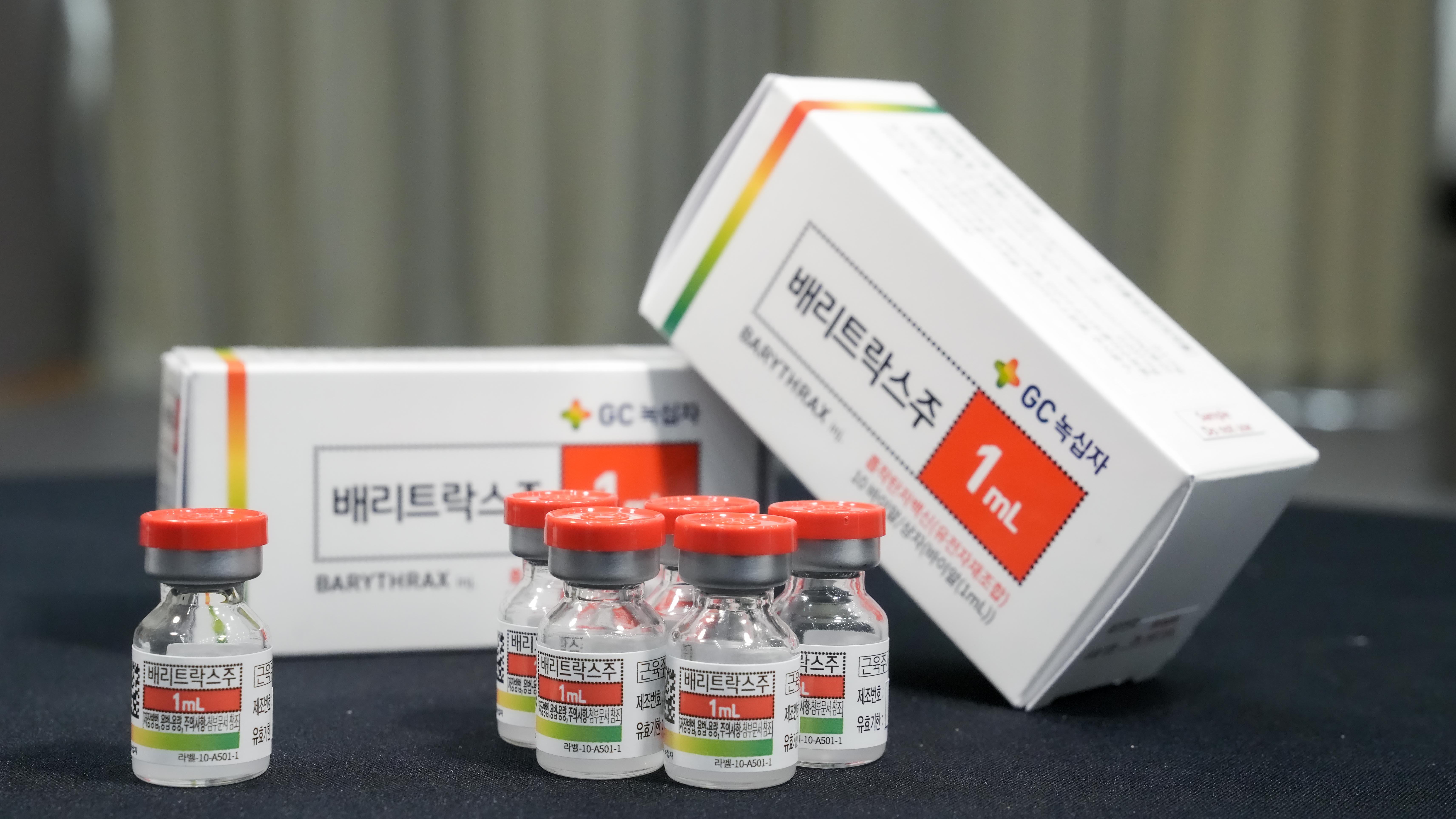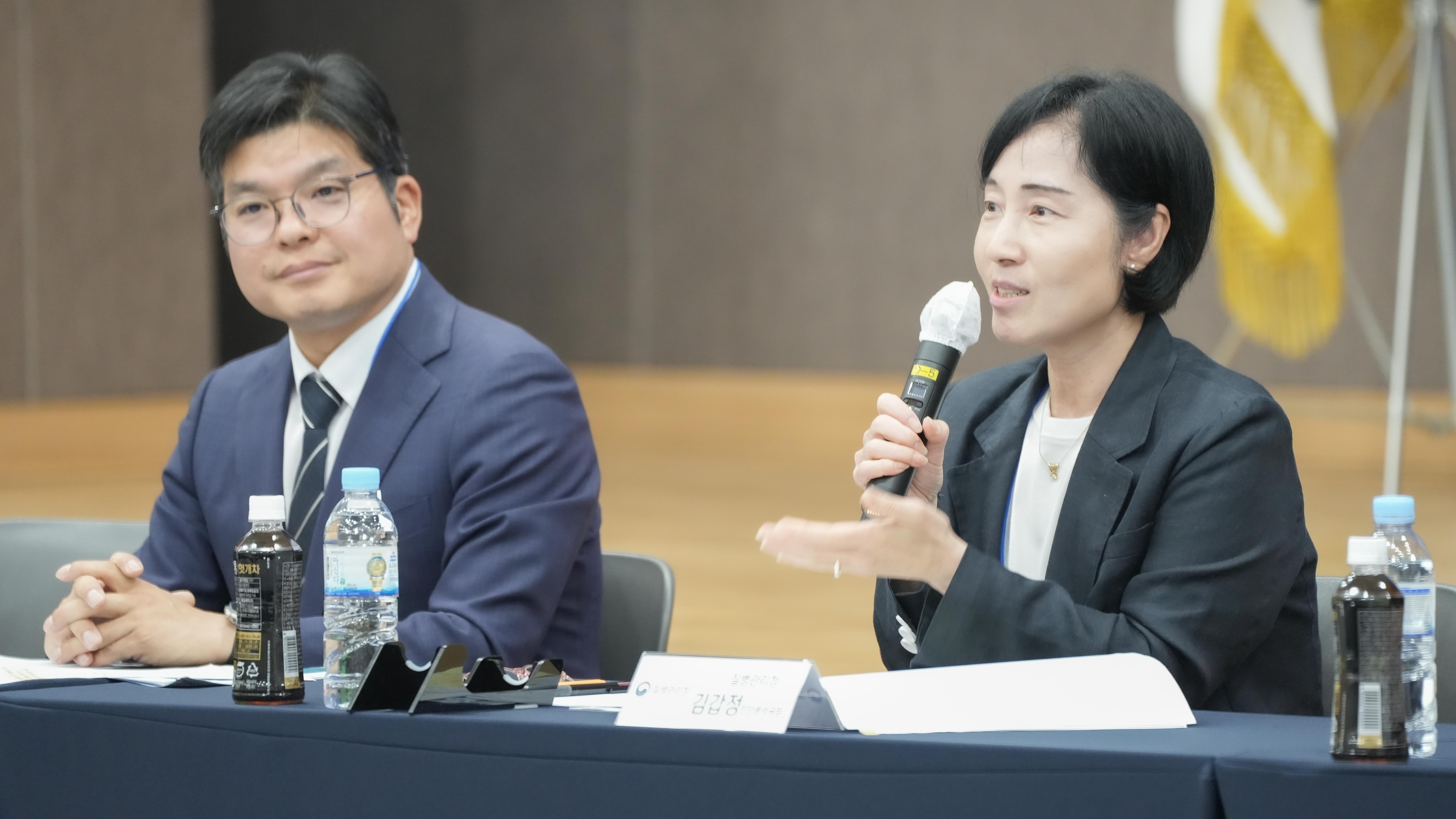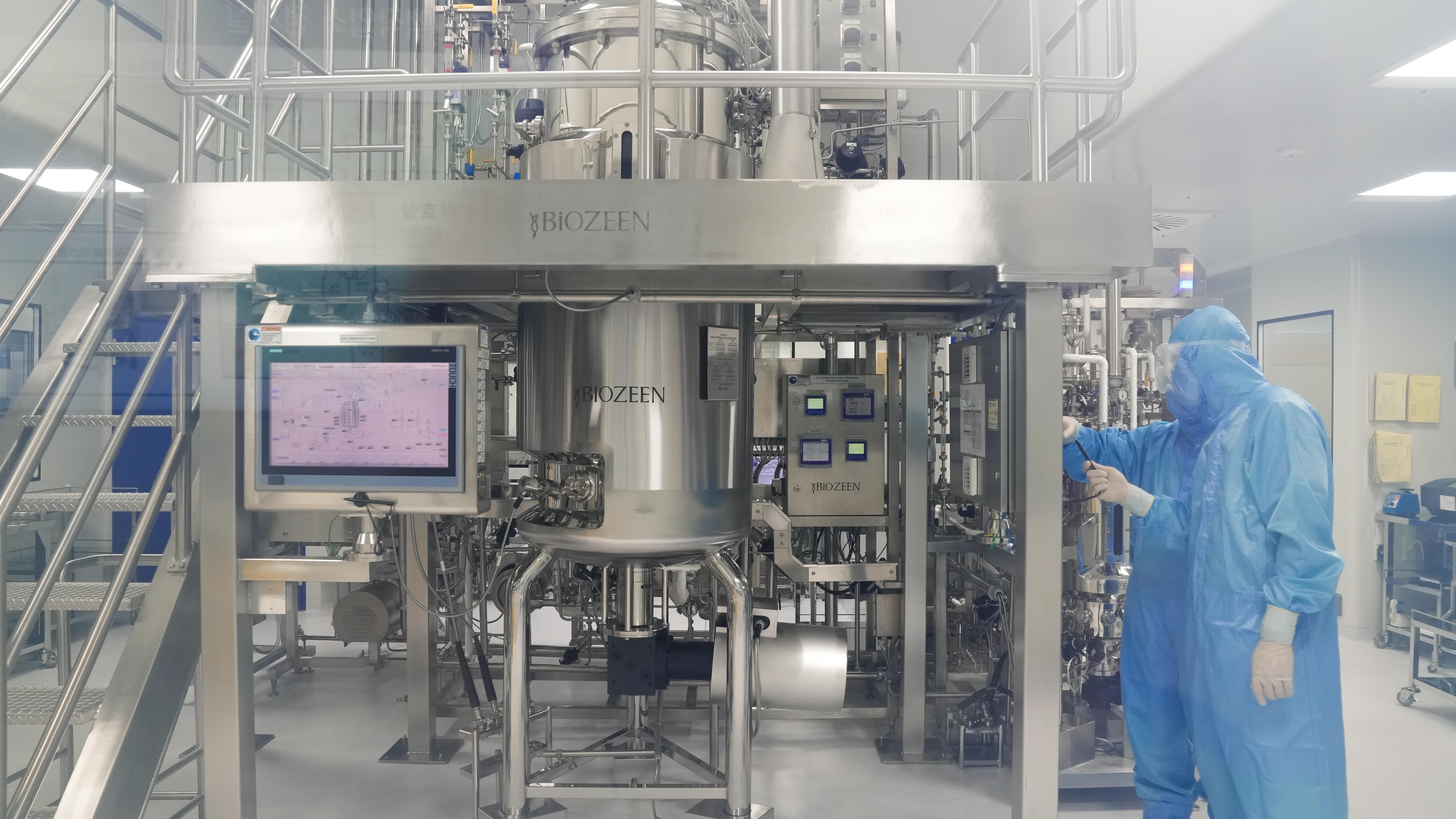
The anthrax vaccine Barythrax was jointly developed by the Korea Disease Control and Prevention Agency and GC Biopharma.
By Charles Audouin
Photos = Korea Disease Control and Prevention Agency
The country has developed the world's first anthrax vaccine that uses genetic recombination technology, setting up a national safety net for public health to respond to bioterrorism through homegrown know-how.
Barythrax, jointly developed by the Korea Disease Control and Prevention Agency (KDCA) and GC Biopharma, in April received approval as a pharmaceutical product from the Ministry of Food and Drug Safety.
Kim Gab Jung, director general of the KDCA's Department of Disease Diagnosis and Analysis, on July 1 told a news conference at GC Biopharma's plant in Hwasun-gun County, Jeollanam-do Province, "With this approval, domestic self-supply in anthrax vaccines is possible, as we were previously dependent entirely on imports."
"We can now proactively respond and ensure a stable vaccine supply if a national crisis erupts."
A fatal disease caused by infection through anthrax spores, anthrax can last for a long time even in harsh environments and has been used as a biological weapon. In 2001, five people in the U.S. died in a terrorist attack that used white powder containing such spores.
"While developing the vaccine, we closely watched the attack with white powder (anthrax spores) in the U.S.," said Chung Yoon-Seok, head of the KDCA's Division of High-Risk Pathogens. "This was an opportunity to raise awareness that Korea needs the capability to respond to bioterrorism."
Anthrax cases continue to occur in countries like Zambia, Uganda, Laos, Thailand and the Democratic Republic of the Congo. Korea has had none since anthrax was designated a statutory infectious disease in August 2000.

Kim Gab Jung (right), director general of the KDCA's Department of Disease Diagnosis and Analysis, on July 1 answers questions at a news conference held at GC Biopharma's plant in Hwasun-gun County, Jeollanam-do Province. On the left is Chung Yoon-Seok, director of the agency's Division of High-Risk Pathogens.
Anthrax vaccines made in the U.S., U.K., Russia and China reportedly cause side effects because they use weakened anthrax spores or contain trace amounts of toxin.
Barythrax, however, is made using genetic recombination technology with the defensive antigen protein of anthrax as the active ingredient. This homegrown vaccine contains no toxins and simultaneously induces an immune response to ensure a preventive effect.
The KDCA said Barythrax is the world's first pharmaceutical product of a commercial anthrax vaccine using such technology.
GC Biopharma project leader Kim Gwanglok expressed high expectations for the vaccine's export potential, saying, "Barythrax is competitive in safety thanks to being toxin free."
The KDCA plans to add the vaccine to national stockpiles this year.

This is the fermentation room at the raw material factory for the anthrax vaccine at GC Biopharm's plant in Hwasun-gun County, Jeollanam-do Province.
caudouin@korea.kr